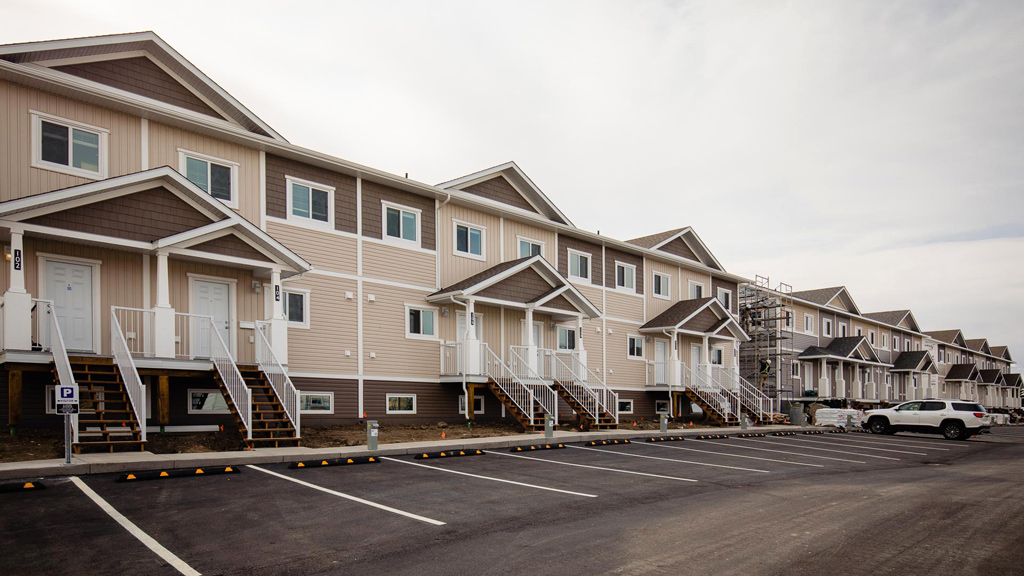Is the multi-family construction sector overripe for shifting from stick built to modular construction, particularly in the affordable housing sector?
Saskatoon, Sask.-based builder Alex Miller, CEO of Big Block Construction, thinks so, but the “fragmented industry” makes that shift for the industry a difficult one.
Miller’s company, which has been doing multi-family modular projects over the past decade in Saskatchewan, has developed a “kickstart kit” that can help other builders learn from its experiences and move into modular construction.
One of the speakers at the Future of Off-Site Construction, a workshop presented by Alberta Wood WORKS! recently, Miller said in 2020, Big Block constructed Saskatchewan’s first net-zero ready multi-unit residential building, which was a 72-unit modular project called Willowview Heights in Saskatoon.
The modular project, which broke ground last May and was ready for occupancy Oct. 1, consists of six 12-plexes.
Miller said the complex achieved a 0.5 air change per hour, not by specifying speciality materials but rather because of “good quality assurance” in the factory and onsite.
Rather than do an EIFS system for a high-performance exterior wall, Big Block found it “more economical” to create its modules with a double wall, consisting of a 2×10 plate and 2×6 and 2×4 staggered studs.
Miller told the webinar audience that modular has to be price competitive to take off.
Sustainability is critical but it is defined in different ways, he added, citing examples as a quicker build, less materials, energy efficiency and waste reduction.
Over the course of Big Block’s 10 years in modular construction, the company has gone through “painful” learning experiences at times. On its first modular project the first two modules took 12 hours to install; today it takes 20 minutes per module.
The idea of modular came to Big Block in 2007 when it moved and renovated 78 war-time homes for an affordable project in Saskatoon.
“We started to think about how to solve the affordable housing issue in a repeatable way.”
Since then, the builder has constructed more than 20 affordable multi-family projects from its factory.
Miller’s advice for anyone wanting to move into the modular arena is to “design for optimal factory construction as well as site assembly.”
He said the most efficient build has “the minimal number of maximum-sized boxes (modules).”
Sounds simple, but it is not. Large modules can be difficult to ship and they can require a lifting crane too large for the site.
“If your workers onsite have a really tough time connecting everything, what’s the point?” he added.
The builder told the webinar audience modular has become similar in cost to onsite construction, including the cost of shipping materials and crane assemblies onsite.
“But I think there are lots of intangibles, such as being to the market sooner, having a higher quality product.”
Mark Kaustinen, senior consultant of B.C.-based KOSH Holdings Inc., told the webinar audience prefabrication is well-suited to multi-unit residential up to six storeys, seven to 12 storey mass timber projects and some large tract single-family developments.
“From an engineer’s standpoint, if you are building a better envelope, it seems counterintuitive to try and build all that stuff onsite,” he said.
Kaustinen pointed out that along with a construction schedule reduction, prefabrication creates predictable project outcomes that lead to schedule certainty.
While cost savings on a project could be in materials, he said construction time is shaved because of less rework required, fewer change orders “and a dramatic reduction in waste, labour and materials.”
He said the push for more offsite construction is partly driven by owners who want quick completions, possibly because of occupancy challenges, but also because there is a growing need for high energy performance buildings in compliance with tightening regulations and codes.
As a case in point, he said B.C. Housing is looking for rapid solutions for affordable housing.
“It will trickle down to many building forms.”











Recent Comments